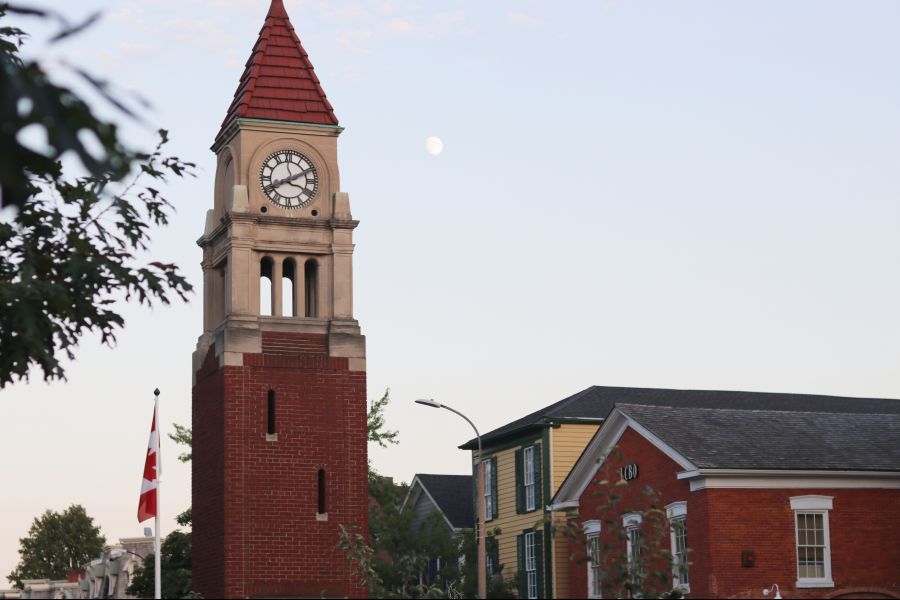Preserving the character of Niagara-on-the-Lake may be a tough battle for some councillors and residents but it seems the town is getting widespread recognition for its efforts.
During a special council meeting on June 20, Marcus Letourneau, an assistant professor of planning at Queen’s and Waterloo universities and managing principal at LHC Heritage Planning and Archaeology gave councillors a heritage training session.
Letourneau, who also teaches part-time at the Willowbank School of Restoration Arts in Queenston, was accompanied by Dan Schneider, former senior heritage policy adviser for the province and a leading expert in the field.
Letourneau said the town is considered at the forefront when it comes to heritage planning and conservation in Ontario.
“It’s fair to say that Niagara-on-the-Lake has really been a leader in heritage conservation,” he said.
“You have a national reputation for heritage planning and heritage resource management.”
The town will be in an even better position to protect its heritage and character once its new official plan is approved by the region.
“You do have some really, really good policies in there. I think that will help because it provides greater clarity and clarity about what rules apply,” he said.
If he was a councillor, Letourneau said he would be constantly asking the region when the official plan is going to be approved. Regional council is set to vote on its new official plan on Thursday, June 23.
But Letourneau wasn’t there to tell council everything it was doing right and provided a wide range of recommendations for how the town can better bring heritage conservation under its planning umbrella.
One of the best ways for a municipality to tackle heritage conservation in the face of growth and development is through the use of a heritage impact assessment, he said.
Prof. Brendan Stewart discussed that topic extensively during an open house regarding the Rand Estate, as noted in The Lake Report last week.
“Essentially a (heritage impact assessment) is both a planning study and a conservation study to determine if and how heritage resources might be impacted by a development and what can we do to mitigate those impacts,” Letourneau said.
Increasingly, though, such assessments are being used as a precondition of approval of developments, he said.
He noted the City of Toronto has tough guidelines when it comes to submitting a heritage impact assessment before a development is approved.
In response to comments from Couns. Erwin Wiens and Clare Cameron, who both raised the issue of the perception of heritage designation as an onerous, overbearing process, Letourneau said the town should lean into incentives.
“I think that’s something that we often don’t think about. Grants have often been really, really successful. A lot of communities do facade improvement grants or loans for commercial areas.”
“I’ve seen communities partner with local credit unions to provide low-interest loans.”
He said there is a heritage property tax relief program possibly in the works for NOTL.
He also encouraged non-financial incentives to encourage designation, such as throwing parties for heritage building owners and taking other community building initiatives.
Letourneau said a well-run heritage program is no more onerous than building or fire code requirements.
“And that’s what I think heritage programs need to aspire to.”
He said council should consider further supporting its municipal heritage committee with a larger budget so that it can accomplish more goals.
Regarding concerns about provincial bill 108, which has municipalities worried they will lose control over many aspects of local planning, Letourneau said heritage designation and heritage delisting always comes down to a vote from council.
However, under bill 108 property owners can appeal those decisions to the Ontario Land Tribunal, he said.
Heritage protection is not just a benefit to preserving the character, which is the selling point of NOTL, he said. It also provides environmental benefits.
“A significant proportion of our waste in Canada is construction waste. So, if you’re not tearing a building down you are actually diverting that waste from the landfill,” he said.
Preserving old neighbourhoods also reduces reliance on vehicles since older neighbourhoods were designed to be walkable, he added.
Above all, Schneider and Letourneau said the town simply needs to prioritize heritage and invest staff time and resources into making it an integral part of the planning process.
And while the experts had more suggestions on ways the town can protect its local character, there was plenty of praise reserved for the work the current council has done.
“The town has just incredible people. The politicians, staff, heritage committee members — you have all the ingredients for a great team,” said Schneider.
“Somehow the town is putting these people together and making things work.”











